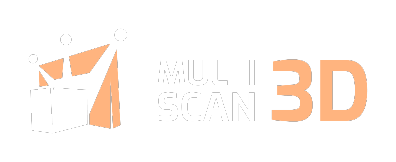Multiscan3D context
Detection technologies have long played an important role in customs border checks, by making it easier to detect dutiable, prohibited and controlled goods and materials. But with movements of cargo and passengers projected to continue rising every year, there is no guarantee of an increase in resources for customs administrations. This has led customs administrations to conclude that improved technology may be one of the few ways open to them to maintain or increase the efficiency of border control.
Customs apply sensors as part of their supervision activities. Sensors are means that assist customs in distinguishing between compliant and non-compliant situations. Sensors provide data such as profile scores, X-ray images, spectra, behaviour, observations, etc. Interpretation of this data then provides reported information based on which the distinction between compliant and non-compliant can be made.
In today’s logistics chain, containers have become one of the most efficient ways to move goods around the world. They travel fast, at very low cost and therefore represents a unique opportunity for business development, legal or criminal. Consequently, container inspection has become a major point of focus for border inspection agencies. Most of the time, agencies will select container for inspection based on risk analysis or surveillance information. Inspection will typically consist of scanning of the entire cargo through a large, high energy systems, in single or dual view in a centralised fixed or relocatable inspection facility, or with mobile system.
The proposed MULTISCAN3D project will thus investigate a new all-in-one inspection system to target custom administrations challenges, whose purpose is to become simultaneously a user-friendly, flexible, relocatable solution offering high-quality information for:
– Fast high energy 3D X-rays tomography (as first line)
– Neutron interrogation/photofission (as second line)
– Narrow gamma ray beam based NRR (as second line)
MULTISCAN3D will start by investigating and defining needs and requirements, in a technologically-neutral way, with Europe’s most prominent Customs Authorities which will be translated to technical specifications. The main body of the research will be focused on three parts, following which, lab validations and real-environment demonstration will be carried out. These three work areas are:
– Laser-plasma based accelerators as X-ray sources
– 3D reconstruction for multi-view configurations and data processing
– Detectors and source monitoring
At the same time complementary techniques with chemical and SNM identification capabilities will be investigated.
